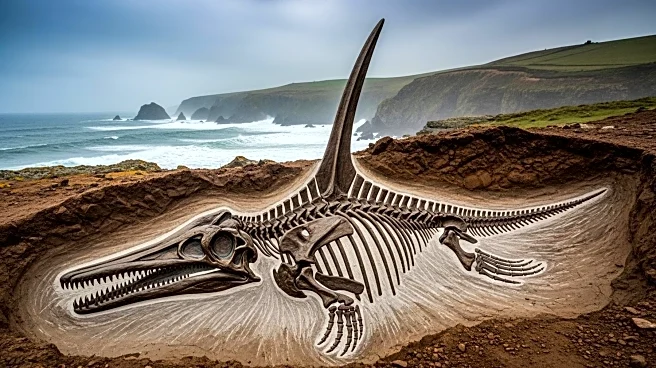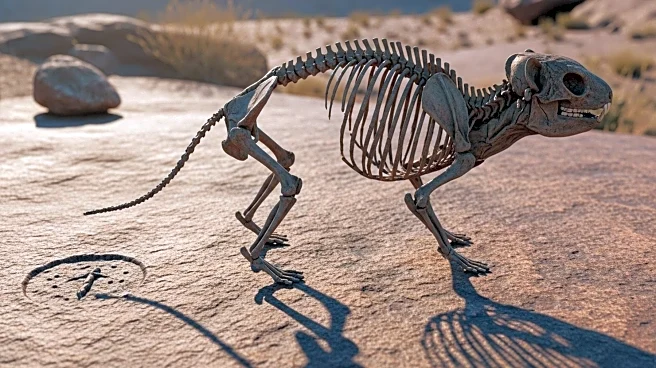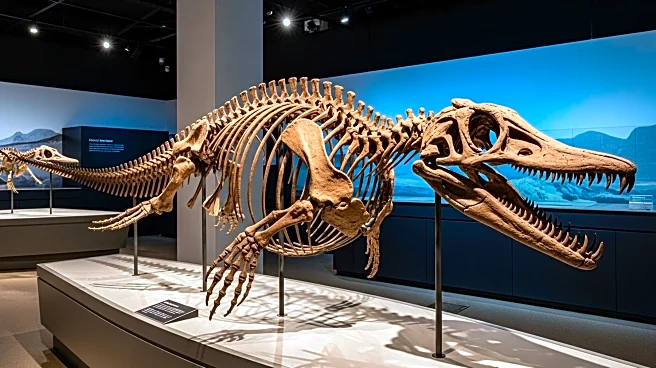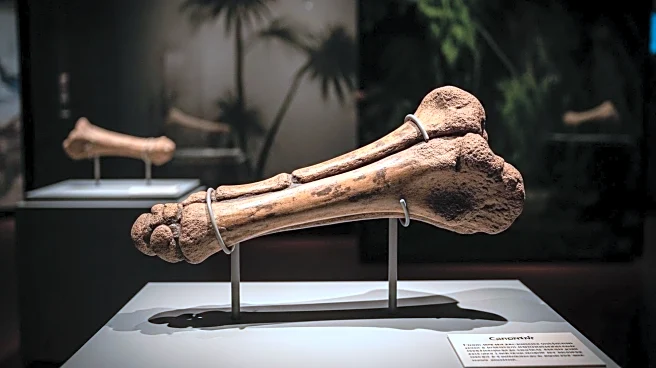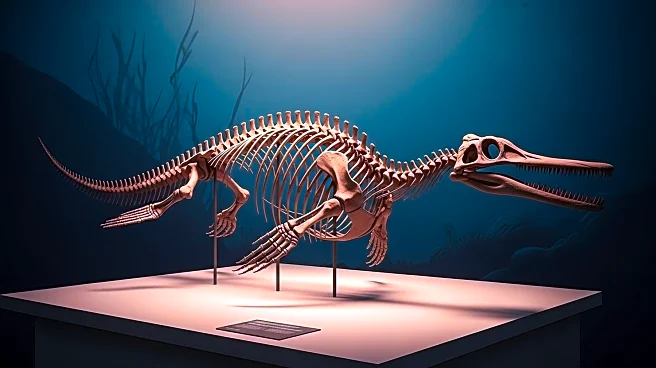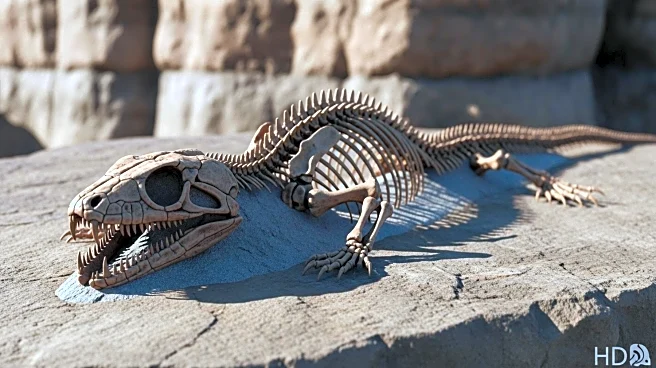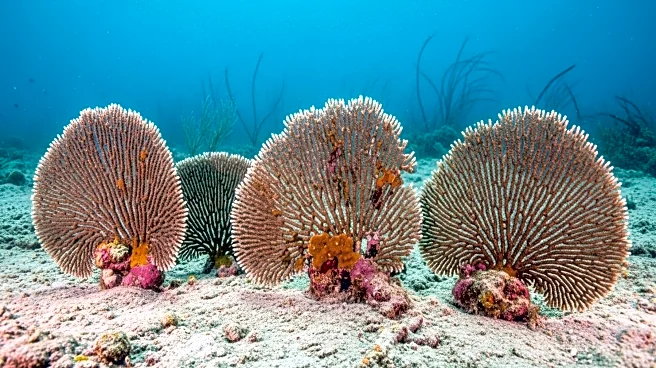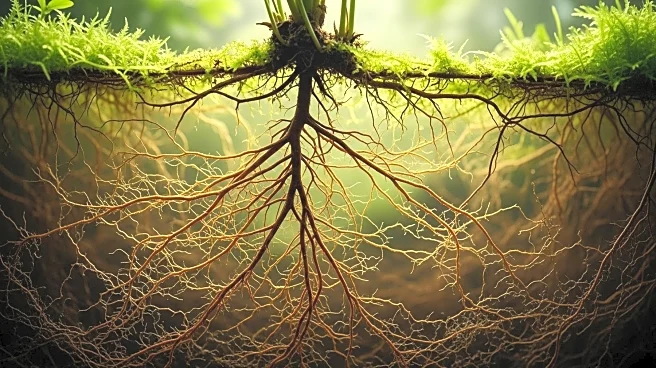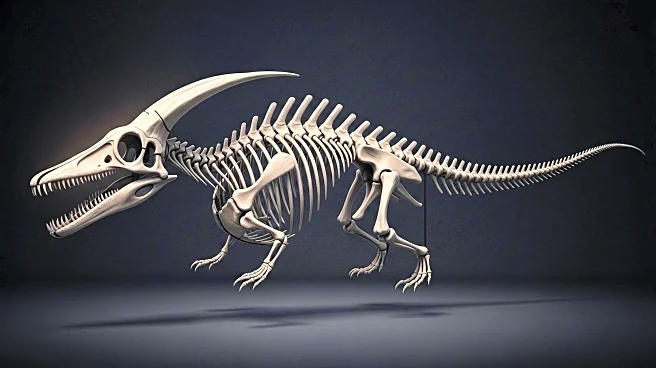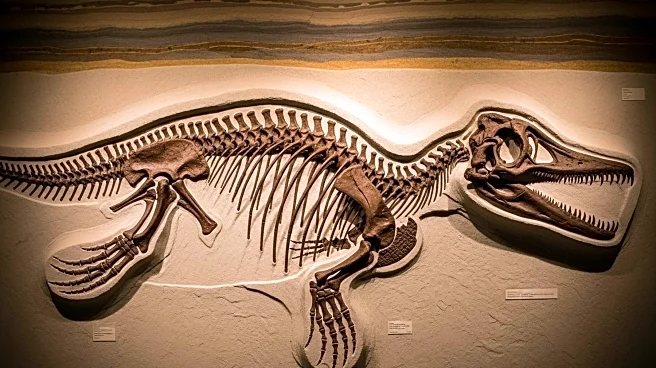What is the story about?
What's Happening?
Researchers have uncovered South America's first amber deposits containing ancient insects in a quarry in Ecuador. This discovery, detailed in a study published in Communications Earth & Environment, provides a rare glimpse into a 112-million-year-old forest that existed on the supercontinent Gondwana. Amber, which is fossilized tree resin, often contains 'bio-inclusions'—trapped remains of plants or animals—that offer detailed insights into prehistoric life forms. The amber found in Ecuador belongs to the Hollín Formation, a sedimentary layer in the Oriente Basin, and includes bio-inclusions from five insect orders, such as Diptera, Coleoptera, and Hymenoptera, as well as a fragment of spider web. The surrounding rock also contained plant fossils like spores and pollen, indicating a warm, humid forest environment.
Why It's Important?
This discovery is significant as it provides new insights into the biodiversity and ecosystem dynamics of the Southern Hemisphere during the Cretaceous era. Until now, most major amber deposits were found in the Northern Hemisphere, limiting scientific understanding of Southern Hemisphere ecosystems during the time when continents were separating from Gondwana. The findings offer a crucial resource for understanding life and biodiversity during this key period in Earth's history, potentially influencing future research in paleontology and evolutionary biology.
What's Next?
The research team, led by Xavier Delclòs, plans to continue examining the amber and surrounding rock samples to further explore the prehistoric ecosystem of southern Gondwana. This could lead to new discoveries about the evolution of insects and plants during the Cretaceous period. The study may also prompt further exploration of other potential amber deposits in South America, expanding the understanding of ancient ecosystems in the region.
Beyond the Headlines
The discovery of these amber deposits not only enriches the scientific understanding of ancient ecosystems but also highlights the importance of preserving and studying fossil records. It underscores the potential for new findings in regions previously overlooked by paleontologists, encouraging a broader exploration of Earth's prehistoric environments.
AI Generated Content
Do you find this article useful?


